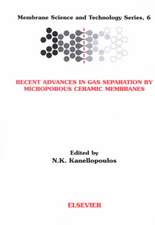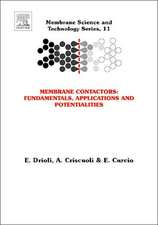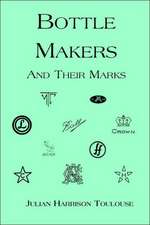Chemical Principles of Textile Conservation: Routledge Series in Conservation and Museology
Autor Agnes Timar-Balazsy, Dinah Eastopen Limba Engleză Hardback – 8 mai 1998
The combination of a chemist and a conservator provides the perfect authorial team. It ensures a unique dual function of the text which provides textile conservators with vital chemical knowledge and gives scientists an understanding of textile conservation necessary to direct their research.
The many practical examples and case studies illustrate the utility of the relatively large chemical introduction and the essential chemical information which is included. The case studies, many illustrated in colour, range from the treatment of the Ghandis' clothes, high-altitude flying suits and a Mary Quant raincoat, to the Hungarian Coronation Mantle.
| Toate formatele și edițiile | Preț | Express |
|---|---|---|
| Paperback (1) | 263.17 lei 22-36 zile | +39.06 lei 5-11 zile |
| Taylor & Francis – 30 iun 2020 | 263.17 lei 22-36 zile | +39.06 lei 5-11 zile |
| Hardback (1) | 778.61 lei 36-50 zile | |
| Taylor & Francis – 8 mai 1998 | 778.61 lei 36-50 zile |
Preț: 778.61 lei
Preț vechi: 1600.75 lei
-51% Nou
Puncte Express: 1168
Preț estimativ în valută:
148.98€ • 155.97$ • 123.28£
148.98€ • 155.97$ • 123.28£
Carte tipărită la comandă
Livrare economică 31 martie-14 aprilie
Preluare comenzi: 021 569.72.76
Specificații
ISBN-13: 9780750626200
ISBN-10: 0750626208
Pagini: 480
Ilustrații: 27 colour photographs, 57 black & white photographs, 123 line drawings
Dimensiuni: 189 x 246 x 37 mm
Greutate: 1.22 kg
Ediția:1
Editura: Taylor & Francis
Colecția Routledge
Seria Routledge Series in Conservation and Museology
Locul publicării:Oxford, United Kingdom
ISBN-10: 0750626208
Pagini: 480
Ilustrații: 27 colour photographs, 57 black & white photographs, 123 line drawings
Dimensiuni: 189 x 246 x 37 mm
Greutate: 1.22 kg
Ediția:1
Editura: Taylor & Francis
Colecția Routledge
Seria Routledge Series in Conservation and Museology
Locul publicării:Oxford, United Kingdom
Public țintă
Textile conservators, textile curators, conservation scientists, collection managers, exhibition designers, curators and conservators of organic artefacts (particularly ethnographic collections) and collectors.Notă biografică
Agnes Timar-Balazsy, Dinah Eastop
Cuprins
Part 1 Materials; Chapter 1 Fibres; Chapter 2 Dyes; Chapter 3 Finishes; Chapter 4 Binding media on printed and painted textiles; Chapter 5 Metal threads; Chapter 6 Case histories; Part 2 Cleaning; Chapter 7 Soiling on historical textiles; Chapter 8 Solvents and solubility; Chapter 9 Solvent cleaning of historical textiles; Chapter 10 Water; Chapter 11 Wet cleaning; Chapter 12 Cleaning by chemical reactions; Chapter 13 Stain removal; Chapter 14 Cleaning metal threads; Chapter 15 Case histories; Part 3 Treatments other than cleaning; Chapter 16 Humidification; Chapter 17 Air drying and freeze drying; Chapter 18 Disinfestation and disinfection; Chapter 19 Adhesives and consolidants; Chapter 20 Storage and display materials; Chapter 21 Case histories; Part 4 Material investigation; Chapter 22 Methods of investigation used in textile conservation; Chapter 23 Investigation of metal threads; Chapter 24 Case history;
Descriere
'Chemical Principles of Textile Conservation' provides must-have knowledge for conservators who do not always have a scientific background. This vital book brings together from many sources the material science necessary to understand the properties, deterioration and investigation of textile artefacts. It also aids understanding of the chemical processes during various treatments, such as: cleaning; humidification; drying; disinfestation; disinfection; and the use of adhesives and consolidants in conservation of historical textiles. Textile conservators will now have ready access to the necessary knowledge to understand the chemistry of the objects they are asked to treat and to make informed decisions about how to preserve textiles.
The combination of a chemist and a conservator provides the perfect authorial team. It ensures a unique dual function of the text which provides textile conservators with vital chemical knowledge and gives scientists an understanding of textile conservation necessary to direct their research.
The many practical examples and case studies illustrate the utility of the relatively large chemical introduction and the essential chemical information which is included. The case studies, many illustrated in colour, range from the treatment of the Ghandis' clothes, high-altitude flying suits and a Mary Quant raincoat, to the Hungarian Coronation Mantle.
The combination of a chemist and a conservator provides the perfect authorial team. It ensures a unique dual function of the text which provides textile conservators with vital chemical knowledge and gives scientists an understanding of textile conservation necessary to direct their research.
The many practical examples and case studies illustrate the utility of the relatively large chemical introduction and the essential chemical information which is included. The case studies, many illustrated in colour, range from the treatment of the Ghandis' clothes, high-altitude flying suits and a Mary Quant raincoat, to the Hungarian Coronation Mantle.























